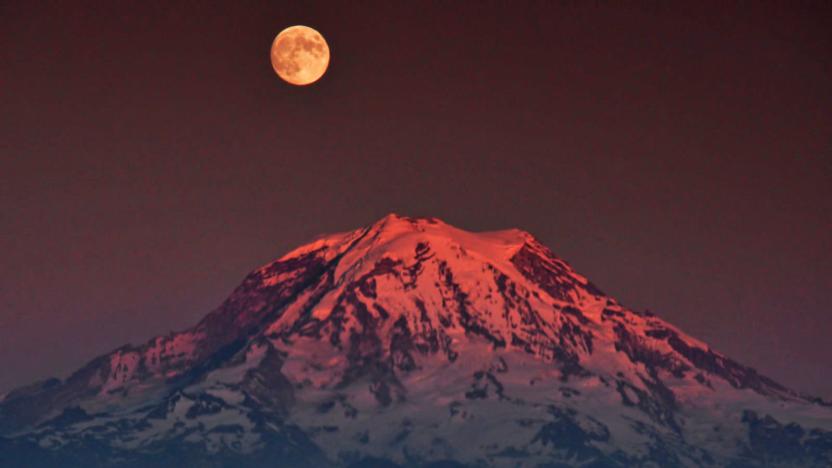LunarReconnaissanceOrbiter
Latest

Water could be extracted all over the Moon, not just at its poles
If we're ever going to colonize another world, we can't rely solely on the supplies we bring with us. We'll have to make use of the resources available at our destination, with water being one of the most important. Not only can we drink it, but add a bit of science and voilà! You've got oxygen to breathe or rocket fuel to fly. Figuring out what resources are where is extremely important, and we've been honing this craft by looking at our celestial ally, the Moon. A study published last year suggested that water may exist in high quantities in the lunar interior, and now researchers have found evidence of water being distributed across the entire satellite, which is at odds with the widely held theory it's concentrated in the colder spots at the Moon's poles.

Space rocks form more craters on the moon than we expected
We might see the moon every night, but we still don't know everything about our planet's faithful companion. For instance, a team of Arizona State University astronomers have discovered that it has around 33 percent more craters than scientists predicted. The team compared 14,000 before-and-after photos of the same sites taken by the Lunar Reconnaissance Orbiter in different periods of time and found 222 craters over 33 feet wide that they didn't expect. They also found 47,000 new splotches, which are splatter-like stains on the satellite's surface.

Lunar Orbiter captures the Earth rising from the moon's horizon
The Lunar Reconnaissance Orbiter has captured a view that's reminiscent of the famous "Blue Marble," except this one comes with something extra: the moon's surface. On October 12th, the LRO's Narrow Angle Camera (NAC) and Wide Angle Camera (WAC) captured a series of black and white and colored photos, respectively, of the Earth rising over the moon. The spacecraft was traveling 83 miles above a lunar crater called Compton at the time, and it had to roll to its side to be able to take the images it needed, all while going faster than 3,580 mph.

NASA says lunar caves could provide living spaces for future astronauts
It turns out that the Moon could be habitable. Sort of. NASA writes that some of the holes in our moon's surface might actually be caves where future astronauts could hole up and guard themselves from radiation, micrometeorites and massive temperature changes when day turns to night, aiding future exploration. The aeronautics outfit says that these caves could be the result of a few different actions, including sub-surface lava draining away from an area and vibrations causing the roofs of resultant voids to collapse. The only way to know for sure, though, is to physically check them out -- there's only so much that photos from NASA's Lunar Reconnaissance Orbiter can tell us. Who knows, maybe once astronauts start delving below the lunar surface they'll find a wizard or two. [Image credit: Associated Press]

Alt-week 9.29.12: 3D pictures of the moon, 4D clocks and laser-controlled worms
Alt-week peels back the covers on some of the more curious sci-tech stories from the last seven days. Dimensions, they're like buses. You wait for ages, and then three come along at once. And then another one right after that. While that might be about where the analogy ends, this week sees us off to the moon, where we then leap from the third, right into the fourth. Once there, we'll learn how we could eventually be controlled by lasers, before getting up close and personal with a 300 million-year old bug. Sound like some sort of psychedelic dream? Better than that, this is alt-week.

NASA creates high-res Moon map, taunts you about your terrestrial tethers
Chances are you will never set foot on the Moon. Sorry, we don't mean to rain on your parade (alright, maybe we do), but the closest you'll ever get is looking at pictures or traipsing around Google Moon. NASA's LRO (Lunar Reconnaissance Orbiter) has been circling our rocky satellite capturing such images, and now 69,000 of them have been stitched together to create the highest resolution topographic map of the lunar surface ever. The Global Lunar DTM 100 m topographic model has a scale of roughly 100 meters per-pixel, allowing researchers to better understand how the crust is formed and accurately scout landing sites for future missions -- be they robotic or manned. Check out the source for a larger image and a few more details.

Visualized: NASA's lunar laser light show
NASA's been quietly shooting lasers at the moon -- and the Lunar Reconnaissance Orbiter, specifically -- for some time now, but it only just opened its Laser Ranging Facility at the Goddard Space Flight Center to the public this weekend and, as you can see, it didn't fail to put on a show. Of course, the lasers do more than provide the backdrop for all-night NASA raves (we're guessing), they also measure the precise location of the LRO and ensure the accuracy of the lunar maps its generates.

NASA delays unmanned trip to the Moon, Moon delays unmanned trip to Earth
NASA has delayed plans to send an unmanned robotic spacecraft to the Moon -- and the pause in action will cost $7 million a month, say reports. According to various news outlets, the Lunar Reconnaissance Orbiter was set to blast off for the Big Cheese this December, but officials have decided a February 27th launch will provide the team with more wiggle room. The $491 million device is being sent skyward to circle the Moon's poles and map a safe touchdown spot for actual humans, set to journey up onto the Lunar surface sometime in 2020. In addition to the Orbiter, the space agency plans to launch an impactor probe into one of the Moon's poles in search of water ice. It should be a blast.





